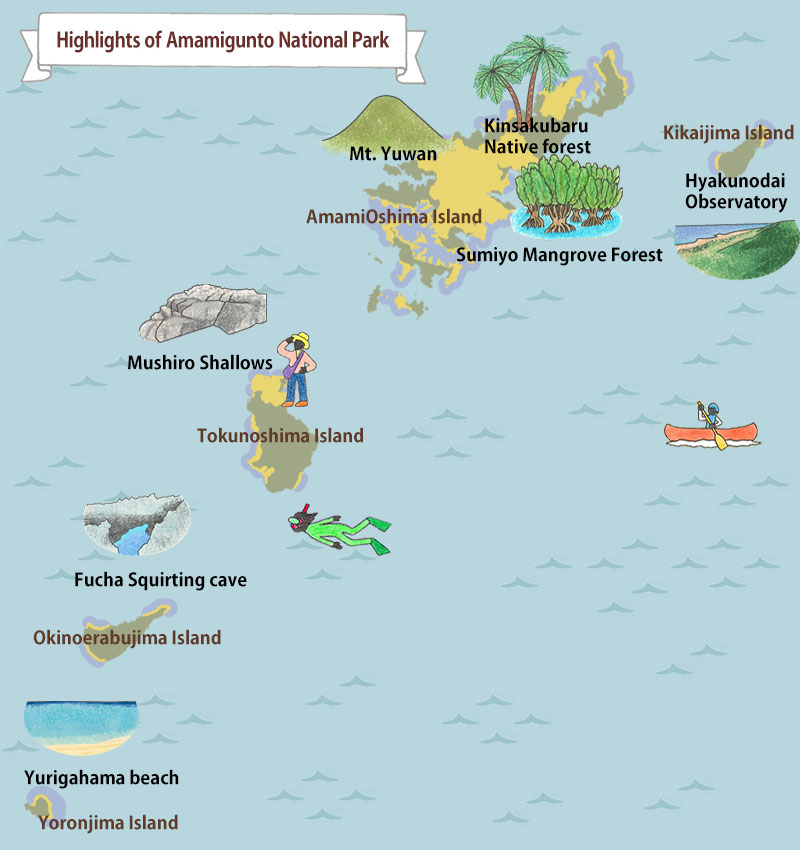- MOE
- National Parks of Japan
- Amamigunto National Park
- Guide of Highlights
main body
Highlights of Amamigunto National Park
Ose Coast (AmamiOshima Island)
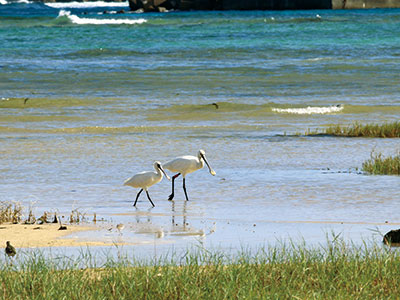
Ose Coast (AmamiOshima Island)
The Ose Coast is the largest stopover point on the Amami Islands and an important resting spot for migratory birds, so along the Ose Coast, you can see various species of birds throughout the seasons. When bird watching on the wide spreading tidal flats, we highly recommend bringing binoculars or a spotting scope.
Amami Nature Observation Forest (AmamiOshima Island)

Amami Nature Observation Forest (AmamiOshima Island)
Here you can walk nature paths through the subtropical, evergreen, broad-leaved forest stopping at wooded viewing platforms along the way, and observe wild birds such the Amami jay (Garrulus lidthi) and the Ryukyu robin (Erithacus komadori). The viewing platforms also offer splendid views of Tatsugo Bay's azure ocean waters and the beautiful forest scenery.
Kinsakubaru Native forest (AmamiOshima Island)
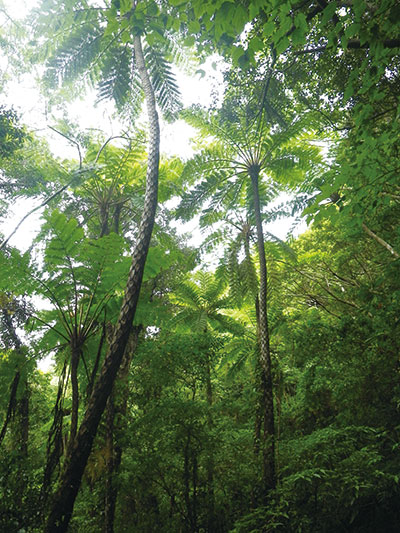
Kinsakubaru Native forest (AmamiOshima Island)
The Kinsakubaru Native Forest is considered the quintessential woodland of Amami Oshima Island, and tree species such as the Castanopsis sieboldii of the beech family, Schima wallichii of the camellia family, and Machilus thunbergii of the laurel family dominate the canopy. The trees of the evergreen, broad-leaved forest envelope the woodland paths and here you can find captivating flora such as flying spider-monkey tree ferns, aptly named after the fact that their young fronds resemble monkey tails; and the giant-leaved Alocasia odora, giving you true sense of the subtropical environment of the Amami Islands.
Mt. Yuwan(AmamiOshima Island)
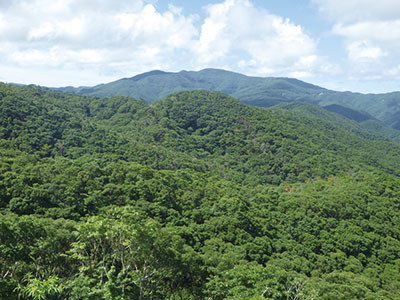
Mt. Yuwan (AmamiOshima Island)
At 694 meters, Mt. Yuwandake is the highest mountain on the Amami Islands. The primeval woodlands around the summit have developed into a coast dwarf forest due to the severe winds that stunt the trees' growth, and with the endemic plant species that can be found in the vicinity of Mt. Yuwandake, it has been established as a protected Natural Monument in Japan.
Sumiyo Mangrove Forest (AmamiOshima Island)
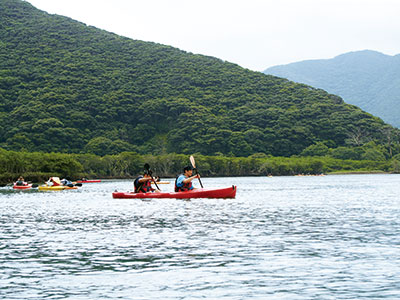
Sumiyo Mangrove Forest (AmamiOshima Island)
The Sumiyo Mangrove Forest is the second largest mangrove forest in Japan after the Nakamagawa Mangrove Forest of Iriomote Island in Okinawa. During low tide, you can catch a glimpse of barred mudskippers (Periophthalmus argentilineatus), a species of soldier crab (Mictyris brevidactylus), and different kinds of fiddler crabs of the genus Uca. And, if you are feeling extra adventurous, you can even take a canoe tour!
Oshima Strait (AmamiOshima Island)
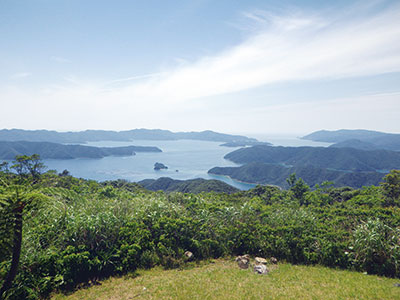
Oshima Strait (AmamiOshima Island)
Running between the Amami-Oshima and Kakeromajima Islands, the ocean waters of Oshima Strait are hemmed in beautifully jagged ria coastlines. With its clear waters and coral reef, this is the perfect place to enjoy sea bathing, sea kayaking, and diving.
Hyakunodai Observatory (Kikaijima Island)
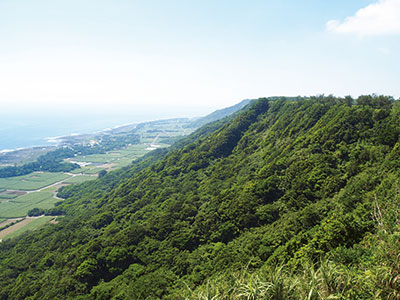
Hyakunodai Observatory (Kikaijima Island)
Hyakunodai Observatory is an uplifted coral reef that rises 200 meter above sea level in the center of Kikaijima Island. From the viewing platform in Hyakunodai Park, you get a panoramic view of the sea and its coral reef, the island villages nestled in their surrounding fields, and the forest-covered terraced terrain that demonstrates how the island was formed.
Mushiro Shallows (Tokunoshima Island)
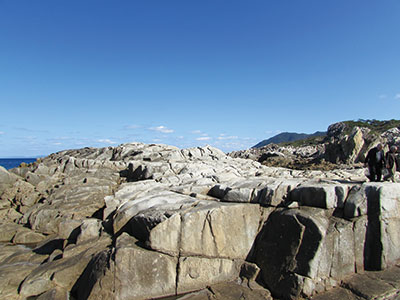
Mushiro Shallows (Tokunoshima Island)
The Mushirose Coast gets its name from a type of traditional woven mat called a "mushiro." Just as the name implies, an enormous slab of granite appears as if someone had spread a mushiro mat out along the coast, making this a particularly remarkable natural sight in Amamigunto National Park.
Aze Coast (Tokunoshima Island)

Aze Coast (Tokunoshima Island)
The Aze Coast is perhaps the most iconic sandy beach on Tokunoshima Island. The ocean waters are stunningly clear, offering you an ideal opportunity to strap on your snorkeling mask and observe the branch coral communities up close.
Cape Inutabu (Tokunoshima Island)

Cape Inutabu (Tokunoshima Island)
With its striking seaside cliffs formed by the erosion of an uplifted coral reef, the scenery at Cape Inutabu is the greatest testimony to the scale of the Amami Islands. A memorial tower honoring the Japanese battleship Yamato stands at the very end of the cape, where a memorial service is held every year on the 7th of April.
Shoryudo Limestone cave (Okinoerabujima Island)

Shoryudo Limestone cave (Okinoerabujima Island)
Discovered in 1963, this impressive limestone cave is 3,500 meters long, with a 600-meter stretch open to the public. Stalactites adorn the entire cavern, creating many breathtakingly beautiful spots in the cave that sparkle when the light shines upon the walls.
Fucha Squirting cave (Okinoerabujima Island)

Fucha Squirting cave (Okinoerabujima Island)
The Fucha Squirting Cave is a coastal cave that was created through the erosion of an uplifted coral reef by the turbulent waves of the East China Sea.When rough waves pass through the cave's opening, the seawater can be shot through rocks to a height of over 10 meters into the air much like a spouting whale, hence the name "squirting cave."
Yurigahama beach (Yoronjima Island)

Yurigahama beach (Yoronjima Island)
The pure white sands of Yurigahama Beach appear during low tide and stretch as far out as 1.5 kilometers off the shore of the Oganeku Coast. Depending on the day, the shape--and even number--of the beaches varies. Here you can enjoy snorkeling and other activities within the reef.
